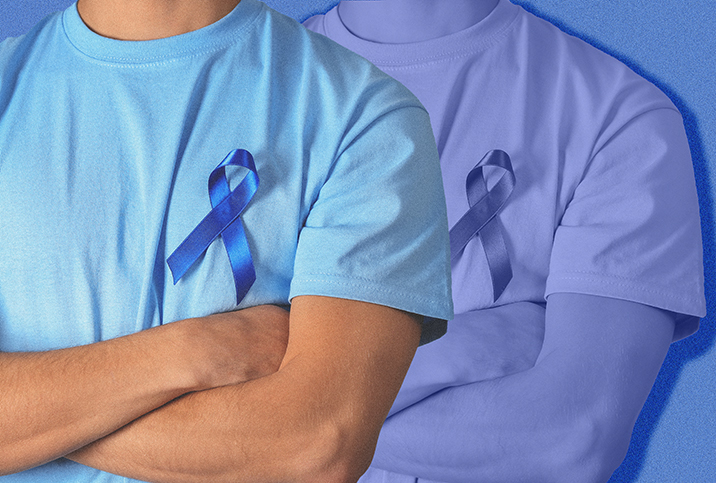Oncology Nurse Navigators Break Down Barriers in Health Care

The U.S. medical system is difficult to manage on your best day. On your worst—like, maybe, the day you receive a cancer diagnosis—it may feel impossible. However, oncology nurse navigators are often available for cancer patients to work with from the first test, through treatment, and into survivorship or palliative care.
Oncology nurse navigators are nurses with oncology training who help coordinate medical care. Having a nurse navigator as part of your medical team is like having a point person and an advocate who knows both the disease and the hospital system.
What role does a nurse navigator play in cancer care?
A nurse navigator's primary role is to make it easier for a patient to get care.
"They're brought in to help identify what a patient needs, and so that could be logistical support to help them get through scheduling appointments, it may be financial needs that they can connect you, it may be psychological barriers that come with such a challenging diagnosis," said Arin Ahlum Hanson, director of Outreach at Living Beyond Breast Cancer.
Oncology nurse navigators can work to solve all kinds of problems, such as finding transportation to appointments, finding translators, helping to manage side effects and even connecting the patient with clinical trials.
The benefits of having a nurse navigator
The role of an oncology nurse navigator originated in 1990, when Harold Freeman began the first navigation program after the American Cancer Society issued a report outlining disparities that affected poor patients and led to worse outcomes.
The benefits of nurse navigation were concrete—and immediate. At the Harlem Hospital Center in New York City, where the navigation program began, the five-year survival rate of patients with breast cancer rose to 70 percent after navigation was introduced, from 39 percent before, according to a report from the American Cancer Society.
At this hospital, all patients were of "low economic status" and half had no insurance as of their first visit. The navigation program provided free and low-cost exams and helped patients receive a diagnosis and treatment faster—which is crucial in treating cancer.
Darcy Burbage, a nurse and board member of the Oncology Nursing Society, said that in her experience as a nurse navigator, turnaround time for a patient to get a biopsy went from three weeks to two to three days. In addition, patients were able to check in with their navigator if something worrying came up—which kept them from unnecessarily seeking emergency treatment.
"We helped them stay out of the emergency room, and they stayed out of the hospital," Burbage said. "That's expensive to the patient. That's expensive to the health care system."
The navigator/patient relationship increases satisfaction with care
Mary Ann Case, who worked as a nurse, nurse navigator and in professional development for nurses for over 40 years at the Dana-Farber Cancer Institute, saw firsthand how patients responded to navigators.
Her clinic had particularly high satisfaction rates, and she was asked to speak at a panel about why. She said it was in part because nurses were always available in the clinic. They also helped coordinate care that included spiritual counseling, creative arts, dentistry, dietitians, integrative medicine, psychiatry, social work and speech pathology.
"Somebody's paying attention here. That's going to make a huge difference in how somebody feels and does," she said. When she switched roles from navigation to help train other nurses, she asked to keep her old phone number because so many patients continued to reach out years into survivorship with questions and concerns.
The shifting role of a navigator in the time of COVID
As the pandemic showed, the role of the navigator can shift to address new problems and concerns as they come up. When patients lived in food deserts and were not able to go out early on in the pandemic, nurse navigators worked to get food to their patients, said Sharon Gentry, program director at Academy of Oncology Nurse & Patient Navigators (AONN+).
And when patients didn't know what information they could trust when learning about COVID-19, they often asked their nurse navigator. "Patients turned to the navigators to answer the fallacies and the myths," Gentry said. "That navigator was that trusted individual in the healthcare system that they knew they could call and get an answer."
Talk to your hospital about adding a navigator to your care team
If a patient doesn't know if they have access to a nurse navigator as part of their care, they should ask, Ahlum Hanson said. All hospitals accredited with the Commission on Cancer are required to have navigators—which is about 70 percent of cancer centers in the U.S., according to Gentry.
And nurse navigators don't cost the patient money to use. Just as a patient may get a second opinion to evaluate their surgical options, Ahlum Hanson recommends considering nurse navigation and other resources that are available to patients as they decide what treatment to pursue.
Nurse navigation sprung from recognizing disparities in the U.S. medical system and aiming to close those gaps. But even if the U.S. healthcare system were perfectly equitable, oncology nurse navigation could still be helpful because of the complexity of cancer treatments.
Often patients are undergoing surgery along with radiation and chemotherapy, or have other illnesses and need to manage combinations of medication and treatment. With a nurse navigator helping to manage treatment and decrease barriers, hopefully patients' worst days can get a little easier.


















